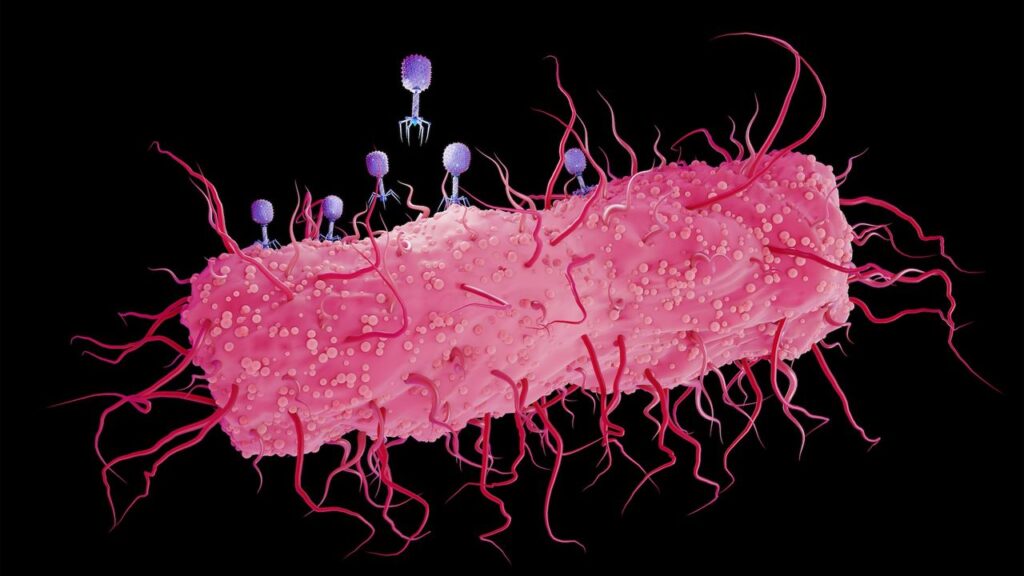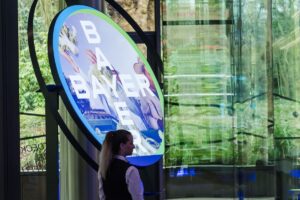
T4 bacteriophages infecting E. coli bacterium, illustration. Phages are viruses that infect and replicate within bacteria.
In a pivotal moment for evolutionary biology, researchers Max Delbrück and Salvador Luria published a paper on November 20, 1943, demonstrating that mutations in bacteria occur spontaneously rather than in response to environmental pressures. This finding reinforces a core tenet of Charles Darwin‘s theory of evolution, suggesting that genetic variation is random, with natural selection favoring the most advantageous traits.
The research, conducted at Indiana University in Bloomington and Vanderbilt University in Nashville, utilized a technique known as the “fluctuation test.” This simple yet innovative experiment aimed to determine whether mutations in Escherichia coli were induced by the presence of phages—viruses that specifically attack bacteria—or if they arose independently.
Delbrück, a physicist who had fled Nazi Germany, entered the field of genetics almost by chance. His interest was sparked when he encountered a researcher studying a newly identified strain of E. coli. Delbrück became fascinated by the ease with which individual phage particles could be observed under a microscope, leading him to explore genetic modeling through the lens of physics.
Luria, an Italian-Jewish doctor who also escaped the Nazis, shared Delbrück’s curiosity about phages and their potential to reveal insights into genetic behavior. Their collaboration began at Cold Spring Harbor Laboratory in New York, where they sought to test the hypothesis regarding bacterial resistance to phages.
They devised an experiment where they cultured E. coli in multiple tubes and exposed them to phages. If mutations were induced by the phages, the growth of resistant bacteria would show uniformity across all cultures. Conversely, if mutations occurred randomly, the cultures would exhibit significant variation, with some displaying many resistant bacteria—termed “jackpot plates”—due to early mutations.
The results confirmed that mutations in E. coli arose randomly, aligning with Darwin’s assertion that natural variation is crucial for evolution. This groundbreaking research was published in 1943, marking a significant milestone in the understanding of genetics and evolution.
In addition to their findings on mutations, Delbrück and Luria later collaborated with Alfred Hershey, a microbial chemist, to explore genetic recombination in phages. Their collective work was instrumental in demonstrating that viruses could exchange genetic material within bacteria. This discovery contributed to the understanding that DNA serves as the genetic carrier, a revelation that earned them the Nobel Prize in Physiology or Medicine in 1969.
While their research solidified the concept that natural selection operates on random mutations, recent studies suggest that the mutation rates may not be entirely random. For example, mutations in essential genes may occur at slower rates compared to those in genes with less critical functions. This nuance indicates that variations in mutation rates could depend on specific biological contexts, such as the use of bacterial immune systems like CRISPR.
The pioneering work of Delbrück and Luria continues to influence the fields of genetics and evolutionary biology, reaffirming the complexity of mutation and adaptation in living organisms.







